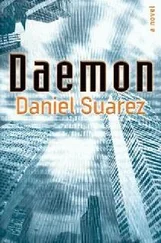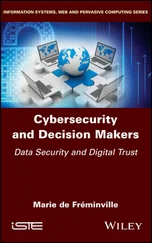Daniel Suarez - Kill Decision
Здесь есть возможность читать онлайн «Daniel Suarez - Kill Decision» весь текст электронной книги совершенно бесплатно (целиком полную версию без сокращений). В некоторых случаях можно слушать аудио, скачать через торрент в формате fb2 и присутствует краткое содержание. Жанр: Триллер, на английском языке. Описание произведения, (предисловие) а так же отзывы посетителей доступны на портале библиотеки ЛибКат.
- Название:Kill Decision
- Автор:
- Жанр:
- Год:неизвестен
- ISBN:нет данных
- Рейтинг книги:5 / 5. Голосов: 1
-
Избранное:Добавить в избранное
- Отзывы:
-
Ваша оценка:
- 100
- 1
- 2
- 3
- 4
- 5
Kill Decision: краткое содержание, описание и аннотация
Предлагаем к чтению аннотацию, описание, краткое содержание или предисловие (зависит от того, что написал сам автор книги «Kill Decision»). Если вы не нашли необходимую информацию о книге — напишите в комментариях, мы постараемся отыскать её.
Kill Decision — читать онлайн бесплатно полную книгу (весь текст) целиком
Ниже представлен текст книги, разбитый по страницам. Система сохранения места последней прочитанной страницы, позволяет с удобством читать онлайн бесплатно книгу «Kill Decision», без необходимости каждый раз заново искать на чём Вы остановились. Поставьте закладку, и сможете в любой момент перейти на страницу, на которой закончили чтение.
Интервал:
Закладка:
Before she could ask Snowcap about it, Odin stood and dropped a pad of paper onto the table. His voice boomed out. “All right, let’s get started.”
Everyone stopped what they were doing and focused on him. The two radio folks at the edge grabbed a seat at the main table. Behind Odin, Singleton emerged from behind a large whiteboard hung on a massive pillar of stone. He was stirring cream into his coffee as he calmly took his seat next to Odin, near the head of the table.
Odin gestured to McKinney. “As you can see, we have a new team member. Expert Six is the myrmecologist who developed the swarming algorithms we found on the Shenyang server-algorithms based on the African weaver ant, her particular field of study. Which means her work is of specific interest to the enemy. Which is no doubt why they tried to kill her thirty-six hours ago.”
Most of the team nodded at her with respect.
Singleton cleared his throat. “You realize they might simply be using her algorithms because they were readily obtainable.”
The others groaned, tossing pieces of paper in his direction.
Singleton held up his hands calmly. “I’m just saying that if they’d been able to get their hands on a more sophisticated model, they would have.”
The Korean scientist scowled. “I suppose you think they should have used your code instead.”
“I’ve looked at Six’s swarming model, and I don’t see how it would be useful in a hardware context without major modifications.”
McKinney looked across the table at him. “I didn’t write it with hardware in mind. I had no idea that it would be used in any context other than pure research.”
“Clearly. Not to mention the fact that we haven’t seen swarming behavior in these attacks. So far what we’ve seen is precision bombing of carefully selected targets. That doesn’t approximate the indiscriminate foraging of Hymenoptera.”
Odin stared at him. “Everyone on this team has expertise relevant to the mission.” He looked to McKinney but pointed at Singleton. “One is an expert on robotics and visual intelligence. More complex autonomous systems.” Then he pointed past McKinney to the Japanese man. “Expert Five, artificial intelligence.”
McKinney brightened. “I saw your flying fish swarm when I came in last night. Pretty cool.”
The man smiled. “Thanks. More of an experiment, really.”
Odin pointed to the African-American man. “Expert Four, drone design.” He crossed the table to the thin blond man. “Expert Two, aerospace and electrical engineering.” Next to him, the Korean man. “Expert Three, computer engineering.” He pointed to the woman across from McKinney. “Snowcap, our MI and psyops liaison.” Then to the two signals people. “Gumball and Leggo, signals intelligence. And of course, you know Foxy.”
Singleton immediately waded into the silence that followed, gazing across the table at McKinney. “It’s not my intention to offend you, Six, but your software isn’t exactly munitions-grade AI. I don’t want us wasting time on theoretical swarming applications.”
McKinney made a point of meeting his gaze. “I’m not offended by rational discussion. I gather we’re all here to solve this problem.”
Odin spoke to the room. “Swarming strategies have historically won sixty-one percent of all battles-and an even greater percentage in urban terrain. Think Grozny, Stalingrad, etc.”
Singleton was undeterred. “But we’re facing more sophisticated, singular weapon systems.”
“Which to me aren’t as worrisome as what might be coming.”
Singleton scoffed. “You’re not seriously suggesting we let these assassinations continue unopposed?”
“Don’t try my patience. The enemy is interested in autonomous swarming-which has the potential to transform the conduct of warfare. We will listen to what Six knows.”
Odin gestured to McKinney. “As a matter of fact, Professor, would you please come up and give the team a primer on your software model and maybe weaver ants in general?”
McKinney sighed, realizing how tired she was. But then, she’d taught many a class exhausted when she was a TA and then an associate professor. She nodded and stood, heading to the nearby whiteboard bolted to the wall-like stone pillar. It was covered with green dry-erase ink, diagrams of circuits, and logic work-flows.
She turned to the team. “Mind if I erase this?”
Singleton pursed his lips. “Hmm. I’m still working through some things there.”
McKinney put the eraser back on the tray. “Fine. I guess I can-”
Foxy was already wheeling a portable whiteboard in from the edge of the room. He slid it in front of the first one.
“Thanks.” She grabbed a marker and faced out to the assembled experts sitting around the room. One of the stranger speaking engagements she’d had. She looked to the Japanese scientist, the AI specialist. “Five, quite a bit of this will be elementary for you. I apologize in advance.”
“Not at all. I’m interested to hear it.”
“Well…” She took a moment to gather her thoughts. “Ant colony optimization-or ACO-models have been around since the early nineties. Mathematical representations of ant behavior are widely used in private enterprise to optimize complex logistics problems, like delivery truck routing, computer network routing, and market analysis. Antlike swarming intelligence is best illustrated by a classic combinatorial optimization challenge known as the Traveling Salesman Problem…”
McKinney drew a series of dots on the board. “Given a list of cities”-she started connecting the dots with a single traveling line-“how do you find the shortest possible route that visits each city only once?” Her on-board solution quickly failed to do so, and she looked up. “Sounds simple, but it’s not; it’s what’s known as a nondeterministic polynomial-time hard problem-meaning it’s very difficult for humans to achieve. Ants solve this problem routinely. They will always find the shortest possible route to a food source, and as experiments using the Towers of Hanoi Problem set show, if that path is obstructed, they can adapt and find the next shortest route. And so on. They do all this without centralized control and without conscious intent.
“In many ways, individual ants are similar to individual neurons in the human brain. The fact that individual ants-let’s call them agents — follow fairly predictable behaviors, means that metaheuristics can simulate their actions with considerable accuracy.”
Snowcap held up her hand. “A metaheuristic is…?”
“It’s an iterative computation method designed to improve a candidate solution. It’s a form of genetic or evolutionary programming. For example, here’s a basic ant algorithm for detecting the edges of pheromone trails. It was developed way back in 1992 by Marco Dorigo…” She started scrawling on the board.
McKinney pointed at the formula. “An ant is a simple computational agent that iteratively constructs a solution for the problem at hand. At each iteration, each individual ant moves from a state x to state y, which represents a more complete intermediate solution. Thus, for each ant”-she pointed at the formula-“ k, the probability of moving from state x to state y depends on the combination of two values-namely the attractiveness?xy of the move, as computed by some heuristic indicating a priori desirability of that move, and the trail level? xy of the move, indicating how beneficial it has been in the past to make that particular move.”
Odin grimaced. “I think we might be getting too deep in the weeds here, Professor. How does your model function?”
McKinney nodded and erased the algorithm. “Right. Sorry. Just wanted to lay a foundation.”
Читать дальшеИнтервал:
Закладка:
Похожие книги на «Kill Decision»
Представляем Вашему вниманию похожие книги на «Kill Decision» списком для выбора. Мы отобрали схожую по названию и смыслу литературу в надежде предоставить читателям больше вариантов отыскать новые, интересные, ещё непрочитанные произведения.
Обсуждение, отзывы о книге «Kill Decision» и просто собственные мнения читателей. Оставьте ваши комментарии, напишите, что Вы думаете о произведении, его смысле или главных героях. Укажите что конкретно понравилось, а что нет, и почему Вы так считаете.











